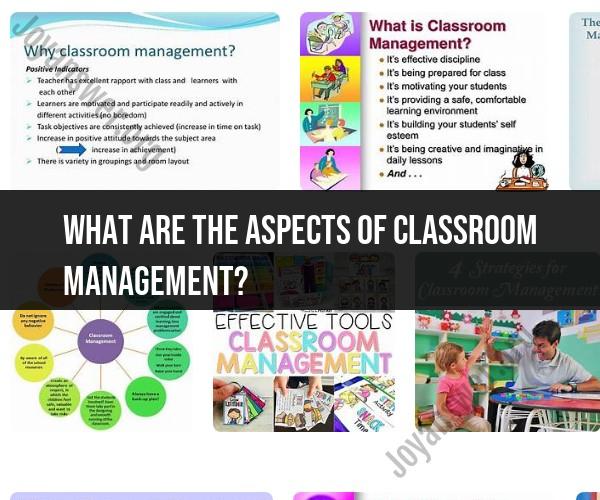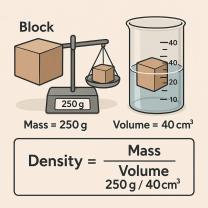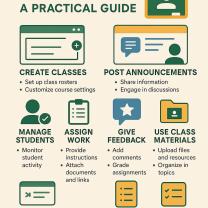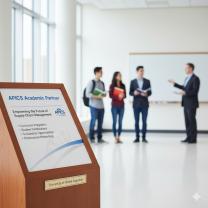What are the aspects of classroom management?
Classroom management is a crucial aspect of effective teaching. It involves a range of strategies and techniques to create a positive and productive learning environment. Key components of classroom management include:
Establishing Rules and Expectations: Setting clear and specific rules and expectations for behavior in the classroom is essential. These rules should be communicated to students at the beginning of the school year and consistently reinforced.
Consistency: Consistency in enforcing rules and expectations is vital. Students need to know that the same standards apply to all and that consequences for breaking rules are predictable.
Building Positive Relationships: Building strong, positive relationships with students can help in managing the classroom. When students feel respected, valued, and understood, they are more likely to cooperate and behave well.
Effective Communication: Effective communication is key to classroom management. Teachers should be able to communicate their expectations, instructions, and feedback clearly and respectfully. Listening to students is also an important part of communication.
Classroom Environment: The physical classroom environment should be arranged in a way that minimizes distractions and supports learning. It should also be a comfortable and welcoming space.
Engaging Instruction: Engaging and interactive lessons can help keep students focused and less likely to act out. Variety in teaching methods and activities can make the classroom more interesting.
Time Management: Effective time management is important. Teachers should have a well-structured schedule that includes time for instruction, activities, and transitions.
Positive Reinforcement: Reinforcing positive behavior with praise and rewards can motivate students to behave well. Positive reinforcement can be a powerful tool in classroom management.
Discipline and Consequences: Teachers should have a clear system of consequences for rule violations. These consequences should be fair, consistent, and appropriate to the behavior. Restorative practices can be useful in some situations.
Classroom Procedures: Establishing routines and procedures for common activities (e.g., entering the classroom, passing out materials, turning in assignments) can help reduce disruptions.
Crisis Management: Teachers should be prepared to handle challenging or disruptive behavior when it arises. This may include strategies for de-escalation and conflict resolution.
Individualized Approaches: Recognizing that every student is unique, it's important to adapt classroom management strategies to meet the needs of individual students, including those with special needs or behavioral challenges.
Professional Development: Continuously improving classroom management skills through professional development and seeking advice from experienced educators can be beneficial.
Self-Reflection: Regularly reflecting on your own teaching and classroom management practices is important. It allows for adjustments and improvements over time.
Successful classroom management is a dynamic process that requires ongoing effort and adjustment. Teachers may need to adapt their strategies to the specific needs and dynamics of their students, as well as seek support and guidance when facing particularly challenging situations.
The Multifaceted Aspects of Classroom Management
Classroom management is a complex and multifaceted process that involves a variety of factors, including:
- Establishing and maintaining clear expectations and rules. Students need to know what is expected of them in terms of behavior, academics, and participation.
- Creating a positive and supportive classroom climate. Students feel more motivated to learn in a classroom where they feel safe, respected, and valued.
- Building strong relationships with students. Getting to know students on an individual basis helps teachers to better understand their needs and motivations.
- Using effective teaching strategies. Engaging and well-planned lessons can help to keep students on task and motivated.
- Managing time and resources effectively. Teachers need to be able to manage their time and resources wisely in order to create a productive learning environment.
- Addressing and responding to disruptive behavior. All students engage in disruptive behavior from time to time. It is important for teachers to have a plan for addressing and responding to disruptive behavior in a way that is fair and consistent.
Exploring the Core Components of Successful Classroom Management
There are a number of core components that are essential to successful classroom management. These include:
- Clear and consistent expectations. Students need to know what is expected of them in terms of behavior, academics, and participation. Expectations should be clear, concise, and consistently enforced.
- Positive reinforcement. Positive reinforcement is a powerful way to encourage students to engage in desired behaviors. Teachers can provide positive reinforcement through verbal praise, written feedback, and other rewards.
- Logical consequences. Logical consequences are natural consequences that follow from students' behavior. For example, a student who chooses not to complete their classwork may be required to stay in at recess to finish it.
- Relationship building. Getting to know students on an individual basis helps teachers to better understand their needs and motivations. This can lead to more effective classroom management strategies.
- Proactive planning. Teachers can anticipate potential problems and develop strategies for preventing them. For example, if a teacher knows that a particular student is likely to be disruptive during a certain activity, they can plan ahead by seating the student near the front of the room or providing them with a more challenging task.
Balancing Discipline, Engagement, and Learning in Classrooms
It is important to balance discipline, engagement, and learning in classrooms. Discipline is essential for maintaining a positive and productive learning environment. However, it is also important to create a classroom where students are engaged and motivated to learn. Teachers can do this by using effective teaching strategies, providing opportunities for student choice, and creating a positive and supportive classroom climate.
Addressing Diverse Needs and Learning Styles in Classroom Management
Teachers need to be able to address the diverse needs and learning styles of all students in their classroom. This may involve using a variety of teaching methods and providing students with different levels of support. Teachers can also create a classroom environment where students feel comfortable asking for help and where they are encouraged to learn from each other.
Fostering a Supportive and Productive Classroom Environment
A supportive and productive classroom environment is essential for effective classroom management. Teachers can foster a supportive and productive classroom environment by:
- Building relationships with students.
- Creating a positive and respectful classroom climate.
- Providing students with opportunities for success.
- Celebrating student achievements.
- Encouraging students to support each other.
Classroom management is a complex and challenging task, but it is essential for creating a positive and productive learning environment. By understanding the multifaceted aspects of classroom management and implementing the core components of successful classroom management, teachers can create a classroom where all students can thrive.













